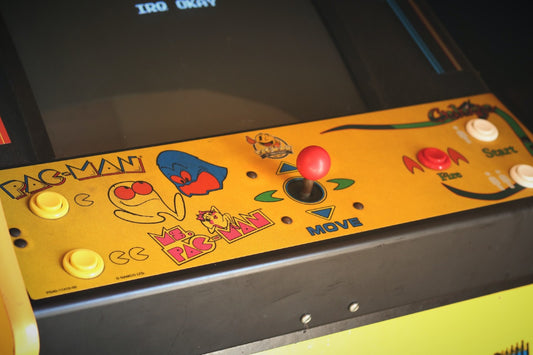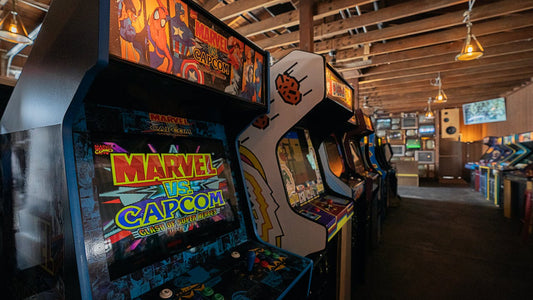Intellivision
The Intellivision is an early games console developed by Mattel Electronics, and is seen as the main competitor to the Atari 2600. The console sold 3 million units in its lifespan with 125 games being released, as well as add-ons for the system. In 2009, the Intellivision was named the ‘14th Best Video Console of All Time’ by IGN.
The system was initially test-marketed in California, 1979. With four games being developed for this. Due to the appraisal and attention the console obtained, the Intellivision was released nationwide in 1980, at the retail price of $299 (around $1000 in 2016). Mattel then went on to produce a series of advertisements featuring George Plimpton which used side-by-side comparisons of the Intellivision and Atari 2600, as the system boasted innovative, 16 Bit graphics and a superior sounds. These were made directly to challenge their main competitor to help drive sales of their new system.
As with the Atari 2600, the Intellivision was marketed to outside retailers. These retailers would then re-badge the unit and sell it under their own company name. Some of these systems are: the Radio Shack, Tandyvision and Sears Super Video Arcade.
Within the first year, the console sold 175,000 units with an additional 35 games on the market for the system. Moreover, by the end of 1982, the 2 million consoles had been sold. Earning a whopping $100,000,000 profit for the business. Around this time, outsourced companies such as Activision and Coleco started producing games for the console to increase both quality, quantity and range of games available to play.
However, the Intellivision is shrouded with controversy. Because of this the company was paying $10,000 a day in fines to the Federal Trade Commission (FTC). This was sparked from the highly-anticipated keyboard component that the company had promised customers.Through early advertisements, the company boasted the capabilities of the console doubling-up as a home computer system. Yet, Mattel found it difficult to ensure the reliability of these keyboards. They also hit another bump in the road when they found how expensive the components were to produce.
Throughout this development stage, the company continued to advertise the keyboard which enraged customers who has purchased the console for the sole purpose of it doubling up as a computer. Soon enough, the component and the company were under investigation from the FTC and ordered to pay a daily fine until the promised computer upgrade was in full retail distribution. Due to the loss of funds due to the fines, and the slow development process of the keyboard, the project was scrapped in autumn 1982. During this time, some models were in fact available in the market and up to four-thousand known upgrades were manufactured. These were all recalled and refunded to customers, although some are still available today.
The next development made to the Intellivision, was the Entertainment Computer System (or ECS). It was produced as an inexpensive add-on in which sought to teach children the basics of coding. During development of the product, the system was dubbed ‘L.U.C.K.I’ or ‘Low User Cost Keyboard Interface’. This device fulfilled Mattel’s previously promised computer upgrade, as it made it possible to write programmes and store them via tape which could interface with a computer. This add-on could also transform the console into a multi-voice synthesiser that could be used to play or learn music. Due to the production of this, the FTC ceased to fine Mattel over false advertisements.
In addition to this, the Intellivision was further innovated upon the creation of the ‘Intellivoice’. The Intellivoice was a new peripheral introduced in 1982. It produced speech throughout gameplay, which was the forefront of technology of the time. However, the addition to the console only worked with few games and did not sell well within the market and was faded out of the market in 1983. Four games are still available for this component, which include: Space Spartans, Bomb Squad, B-17 Bomber and Tron: Solar Sailor.
Even after the disastrous history of Intellivision’s additional components, Mattel didn’t stop there. The Intellivision was redesigned in a new, sleek model. This came with a system changer so that Atari 2600 games could be played on the console as well as a music keyboard add on for the ECS. In addition to these, the controllers also showcased a new design, now being detachable and with a flat-membrane keyboard. Though, this system did need an additional AC adaptor with a different voltage from the mains supply, making it difficult to replace when broken. The Intellivision II was a success, so Mattel decided to release an Intellivision III for Christmas 1983. However, this was scrapped at the last minute due to the release of the Colecovision and Atari 5200.
Mattel suffered over the next few years, due to high saturation in the market and the infamous Video Games Crash of 1983. Subsequently, the price of the Intellivision II was reduced to $69 from the $150 price tag the system first sold for. Mattel lost over $300 million over this period. Due to this, the division was closed and it became the first major victim of the ’83 crash.
Although the console was no longer being developed, a large company called INTV bought out what Mattel had left and sold rebranded original consoles. They also continued development and sales of games for the system. Finally, the system was discontinued in 1991.
The console brought about many original innovations in the gaming world. Firstly, the system was the earliest 16-bit console. Also, the Intellivision was the first system to feature downloadable content and it was the first console to have the ability to produce real time human/robot voices in gameplay. Lastly, it was the first console and home computer system to offer a music synthesiser.
If you're a fan of the golden age of retro gaming like we are you'll definetly want to check out our custom arcade machines for access to hundreds and thousands of retro titles.



